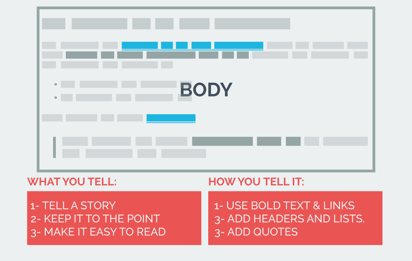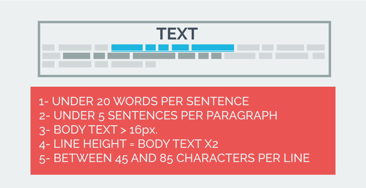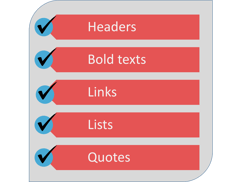
With this post I hope to provide something of an education of blogging to be seen. There are a great many questions you should be asking yourself before you publish your content. Perhaps most important of all those questions is whether your content is capable of gripping an audience. There's no escaping it, what you put out into that vast ocean of digital content needs to be raging engaging.
How to Write an Engaging Blog Post
You’ve lost count of how many times you’ve been told to stop writing articles and start telling stories. So, have you made the transition?
Making your articles about something authentic and personal will make them more engaging and readable. If you don’t know where to start, you can check the usual suspects – in this case, copyblogger or problogger.
Personally, I think the best inspiration for storytelling comes from blogs
outside the marketing industry. Story and Heart is a great example, and they’ve got a list recommending the best storytelling blogs.
- The story is everything
 Always to the point
Always to the point- Make it readable
- Use visual resources
Also, as always, keep it short. Long sentences and paragraphs tend to alienate your readers and drive them away. Try to use short sentences and paragraphs.
You can use the Flesch-Kincaid test to check how readable your text is. Created by the US military to gauge the comprehension difficulty of texts, this test is a good tool with which to set your writing standards. (On a 0-100 scale, the lower the score, the more complex the text.)
Try to keep your sentences under 20 words and your paragraphs under 5 sentences.You can use online readability tests to make sure yours are alright. Remember that you write for an audience, and if you’re writing for PhDs only, a score of 30 may be ok. If you’re writing for wider audiences aiming for a range between 60 and 70 may be more reasonable.
Even with concise, easy to digest wording, the text itself may be hard to decipher. This may be because of poor font choices, a small text size or because you’re exposing your users to never-ending chunks of text without visual support.

As a rule of thumb, your post should have a body text of 16px at the very minimum, with a line height of at least double the font size. Widely used fonts like Georgia and Verdana are easy to read in almost any device and resolution, but, on the other hand, won’t really help to set you apart. You’ll have to find a balance.
Google Fonts and Typekit allow you to choose from thousands of fonts. If you’re not a designer, it may be helpful to rely on some insights other people’s experiences.
Then of course there's the question of how you manage your positive and negative space. That is, where and how you juxtapose your text with blank whitespace. I prefer singular, block column templates (like Medium) over two column blogs. The banner blindness effect means nobody will interact with almost anything you broken up into columns. A block design - however - allows you to use bigger fonts, bigger images and in-text CTAs that, in my experience, convert better.
If you don’t know the ideal width for your text, strive for between 45 and 85 characters per line. This is benchmark is substantiated by both my own personal experience and empirical data.
Here's a small adjustment to your posts that can make a huge difference: use visual content. Even with all the above resources and recommendations at your disposal, your content may intimidate readers and stray towards monotony.
Visuals are a great way to combat perceived post density as well as an opportunity to provide additional resources and/or just enhance the feel of the post. Depending on your blog post you can use images, graphs, video, presentations, sound files...
Try different things, platforms like Slideshare, Prezi, Vimeo or SoundCloud may be great alternatives to the usual Youtube video. Use them once every few paragraphs so you can be sure that your users remain engaged with your content.
Finally, here are some 5 document elements to make a part of your posting checklist:
 Headers to order information
Headers to order information- Bold text to highlight key information and make it easier for diagonal readers
- Links, to add colour and variety as well as expanding your blog post
- Lists to present information clearly
- Quotes: they add spacing and are nice things to tweet
Ultimately it comes down to this simple question: If you're not blogging to be seen, why are you blogging?
This is the second in a three-part series of guest posts on SEO from Bruno Rodriguez Armesto, Head of Inbound Marketing at ThunderMetric.

by The Penguin Team on July 29, 2015
As a leading B2B digital marketing agency, We help B2B Technology Companies, enterprise software, and hardware companies increase brand awareness, reach more qualified leads and close more customers. Penguin Strategies is a Diamond Partner of HubSpot.





